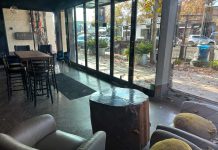Gilroy is featured in “El Camino Real and the Route of the Daylight”, a book recently published by the Los Angeles Railroad Heritage Foundation about the history of California’s first road and railroad systems.
Consisting of more than 200 pages, the history book features four pages of photos, illustrations and text on the agricultural evolution of Gilroy due to the key aspect farming played in the creation of the California mission system. According to the book, in the late 1800s, Gilroy was on its way to becoming the Tobacco Capitol of the United States. More than 200 years later, Gilroy has changed directions and is now famous for being the Garlic Capitol of the world.
Phill Laursen, a volunteer at the Gilroy Museum, said the Executive Director of the Railroad Heritage Foundation, Joseph Lesser, contacted him a few months ago. Lesser asked for help from the museum to find photos for the section of the book that would involve Gilroy. Dispatch chief photographer Lora Schraft and Patricia DeStasio of Christopher Ranch were also able to supply images.
“The book is beautiful, wonderfully illustrated and very well-written,” Lesser said.
The book also features photos of Mission San Juan Bautista and the original El Camino Real, which connected 21 missions and several presidios for foot and wagon traffic from San Francisco to San Diego. An unpaved stretch of the old road still runs just east of Mission San Juan Bautista, along the path of the San Andreas Fault.
Laursen said that the cost of the book is approximately $39.50. The price is higher than he anticipates casual visitors to the Gilroy Museum will be willing to pay, so Laursen is reluctant to use the museum’s funds to buy copies in advance.
According to Laursen, Lesser donated two books to the museum in gratitude for Gilroy’s help and that anyone interested is welcome to examine them.
“I think some Gilroyans would be quite willing to buy copies,” Laursen said.














